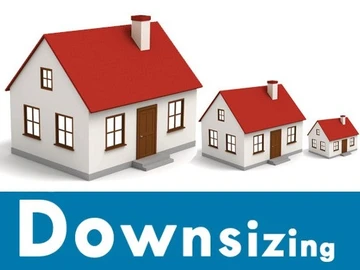Introduction: The Inversion of Development
In a normal development ecosystem, municipalities build infrastructure and developers build properties. The local authority provides enabling services like roads, water, sewer, and electricity so that private sector investment can plug into a functioning system.
But in Zimbabwe, the roles are reversed.
Developers are not only designing and constructing buildings—they are also funding and implementing infrastructure that local councils should be responsible for. And despite doing the work of the municipality, they’re still expected to pay rates and development levies.
This quiet crisis is reshaping our urban economy. It’s one of the most under-discussed reasons why property prices in Zimbabwe are so high, why service delivery is so poor, and why only a handful of players can afford to build at all.
Case Study: Highland Park—Behind the Gloss
Take the case of Highland Park, the new upmarket mixed-use development in Harare’s Highlands area, developed by Terrace Africa. To the public, it's a pristine retail and lifestyle precinct. But behind the scenes lies a more complex story.
Before construction began:
- Roads had to be widened to absorb anticipated traffic volumes.
- Water infrastructure had to be upgraded to ensure supply security.
- Drainage and sewer systems required full-scale rehabilitation.
- Stormwater designs had to accommodate urban runoff challenges in the area
Most of this wasn’t funded or executed by the City of Harare—it was borne by the developer.
This example is not an outlier. It’s become the norm.
This is Happening Across Zimbabwe
From Harare to Victoria Falls, developers are now quasi-municipalities. Here are just a few examples:
- Pokugara Residential Estate (Borrowdale West): Required developers to fund road resurfacing and install private water infrastructure via boreholes and tanks.
- Aspindale Park (Harare West): Developers had to build sewer lines from scratch and connect them to the main municipal system, often upgrading outdated public systems en route.
- Arundel Office Park: Power reliability was so poor that developers invested in dedicated transformers and a private back-up solar grid.
- Victoria Falls Business Park: Developers were mandated to invest in wastewater treatment and road upgrades before the city would approve any construction.
The Hidden Cost: Why Real Estate Is So Expensive
Zimbabwe’s property market is expensive—not just because of inflation, currency volatility, or land costs. The real estate prices are inflated by hidden infrastructure costs.
When developers are forced to:
- Install their own water and sewer systems
- Pay for roads, drainage, and substations
- Build refuse management structures
- Drill boreholes and install tanks or solar backup
—they absorb significant capital expenditure upfront.
That cost has to be recovered, and it is—by passing it onto the buyer. This is one of the most overlooked contributors to the high cost of residential and commercial real estate.
💡 For example:
A developer building a mid-range townhouse in Harare might spend:
- US$10,000–$15,000 per unit on municipal infrastructure
- Plus another US$5,000–$8,000 on water storage, sewage, and electrical upgrades
These are costs that should have been amortised by council investments—but instead are passed directly to the buyer, inflating prices by 20–30% before factoring in profit margins.
Only the Strong Survive: The Barrier to Entry
Because of these costs, only a few well-capitalised players can develop at scale. This creates:
- Market concentration – dominated by a handful of developers
- Fewer affordable housing projects – as smaller firms are priced out
- Slower urban expansion – with less competition and innovation
- Increased inequality – as upmarket areas get infrastructure and low-income areas are left behind
It also makes Zimbabwe’s well-documented 1.2 million housing backlog even harder to address. Developers want to build but the system makes it nearly impossible without massive cash flow and risk tolerance.
The Myth of Partnership: This Isn't a PPP
Government officials often tout “private-public partnerships” as a way to fast-track development. But this isn't a partnership—it’s privatisation of municipal responsibility.
There are:
- No incentives
- No rebates
- No matched funding
- No clear guidelines
In many cases, councils demand development levies but do not provide any services in return. The “partnership” ends once fees are paid.
Where Do We Go From Here?
Zimbabwe has a choice: continue letting developers carry the weight—or reform the system and share the load. Here’s how:
✅ Introduce Rates Rebates for Infrastructure Investment
Developers who upgrade roads, sewer or power supply should receive offsetting credits or reduced levies.
✅ Create Transparent Infrastructure Cost-Sharing Models
Set formulas to co-fund public infrastructure tied to new developments.
✅ Enforce Infrastructure Master Plans
Don’t leave development to improvisation—mandate city-wide growth plans and require councils to fund bulk services.
✅ Zone Incentives
Offer fast-tracking or tax breaks in priority zones (e.g., for housing estates or special economic zones) where developers shoulder infrastructure costs.
✅ Audit and Ring-fence Development Levies
Ensure councils use development levies to fund infrastructure in the same area where it was collected.
Conclusion: Let Builders Build But Not Alone
Zimbabwe’s real estate boom is being built on a shaky foundation: one where the private sector is doing public work, and the end buyer is left footing the bill.
Until this system changes, our property market will remain expensive, inefficient, and deeply unequal.
 Continue with Facebook
Continue with Facebook
 Continue with Email
Continue with Email














